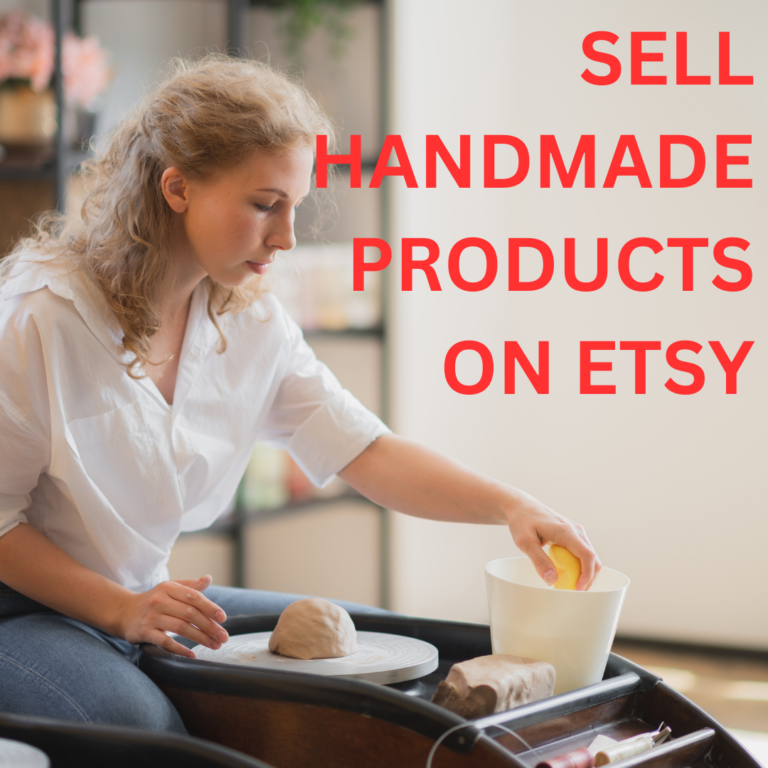Turn Your Creativity into Cash: Selling Handmade Products on Etsy
In the era of mass production and automation, there’s a growing appreciation for handmade and unique items. Etsy, a global online marketplace, has become the go-to platform for creators to showcase and sell their handmade products. Whether you’re a seasoned crafter or just starting, Etsy offers endless opportunities to turn your passion into a thriving business.
This article explores how you can successfully sell your handmade products on Etsy, from crafting your creations to marketing your shop effectively.
Why Etsy?
Etsy is one of the largest online marketplaces for handmade, vintage, and unique goods. Here’s why it’s an ideal platform for artisans:
- Global Audience: With over 90 million active buyers worldwide, Etsy offers unparalleled reach.
- Focus on Creativity: Etsy’s marketplace celebrates creativity, making it perfect for selling handmade items.
- User-Friendly: The platform is easy to navigate, even for beginners.
- Supportive Community: Etsy provides resources and forums to help sellers grow.
- Low Start-Up Costs: You can start selling with minimal investment.
Step 1: Choose Your Handmade Products
Selecting what to sell is the first step to building your Etsy business. Your products should align with your passion and skills while appealing to a specific target audience.
Popular Handmade Categories on Etsy:
- Jewelry and Accessories: Unique necklaces, bracelets, and earrings.
- Home Decor: Handmade candles, pillows, or wall art.
- Personalized Gifts: Customized items for special occasions.
- Stationery: Handcrafted journals, planners, or greeting cards.
- Fashion: Hand-sewn clothing, knitted scarves, or embroidered goods.
- Art: Original paintings, prints, or sculptures.
- Beauty and Wellness: Homemade soaps, lotions, or skincare products.
Tips for Choosing Products:
- Focus on a niche to stand out.
- Ensure the quality of your products is top-notch.
- Research trending products on Etsy to identify opportunities.
Step 2: Set Up Your Etsy Shop
Creating an Etsy shop is simple and straightforward. Here’s how:
- Register an Account:
- Sign up on Etsy.com.
- Choose a unique shop name that reflects your brand.
- Set Up Your Shop:
- Upload a professional logo and banner.
- Write a compelling shop description that highlights your story and craftsmanship.
- Add Your Products:
- Use high-quality photos to showcase your products.
- Write detailed descriptions, including size, materials, and care instructions.
- Set competitive prices based on material costs, labor, and market research.
- Set Shipping Options:
- Offer clear and reasonable shipping policies.
- Consider free shipping for increased visibility.
- Enable Payment Methods:
- Etsy supports multiple payment options, including credit cards, PayPal, and Etsy gift cards.
Step 3: Optimize Your Listings for SEO
Etsy SEO (Search Engine Optimization) helps your products rank higher in search results, making them easier for potential customers to find.
How to Optimize Your Listings:
- Use Relevant Keywords:
- Include keywords buyers are likely to search for, such as “handmade jewelry” or “custom wedding gifts.”
- Place keywords in titles, descriptions, and tags.
- Write Clear and Engaging Descriptions:
- Highlight the unique features and benefits of your products.
- Use bullet points for easy readability.
- Tag Your Products:
- Use all 13 available tags to describe your items.
- Include variations like “handcrafted,” “eco-friendly,” or “personalized.”
- Leverage High-Quality Photos:
- Use natural lighting and multiple angles.
- Include close-ups to show intricate details.
Step 4: Market Your Etsy Shop
To drive traffic and sales, you need to actively promote your Etsy shop.
1. Social Media Marketing:
- Share your products on Instagram, Facebook, and Pinterest.
- Use relevant hashtags like #HandmadeWithLove or #EtsySeller.
- Engage with followers by sharing behind-the-scenes content.
2. Email Marketing:
- Build an email list by offering discounts or freebies.
- Send newsletters featuring new products, sales, or tips.
3. Collaborate with Influencers:
- Partner with influencers in your niche to showcase your products to their audience.
4. Etsy Ads:
- Use Etsy’s advertising platform to promote your products within the marketplace.
5. Content Marketing:
- Start a blog to share crafting tips, DIY ideas, or the story behind your creations.
- Use SEO to drive organic traffic to your shop.
Step 5: Provide Excellent Customer Service
Satisfied customers are the key to building a successful Etsy shop.
Tips for Great Customer Service:
- Respond Promptly: Answer questions and messages quickly to build trust.
- Personalize Interactions: Add thank-you notes or small freebies to orders.
- Handle Issues Professionally: Offer solutions for damaged or delayed items.
Encourage Reviews:
Positive reviews boost your shop’s credibility and attract more buyers. Politely ask satisfied customers to leave a review.
Step 6: Scale Your Etsy Business
Once your shop gains traction, focus on scaling your operations.
Ideas to Grow Your Business:
- Expand Your Product Range: Introduce new items based on customer feedback and market trends.
- Optimize Your Processes: Invest in tools or hire assistants to streamline production and order fulfillment.
- Participate in Events: Join local craft fairs or online marketplaces to increase your brand’s visibility.
- Track Analytics: Use Etsy’s built-in analytics to monitor your shop’s performance and identify areas for improvement.
Costs to Start Selling on Etsy
Etsy’s fee structure is straightforward, making it affordable for most creators.
Key Costs:
- Listing Fees: $0.20 per item listed.
- Transaction Fees: 6.5% of the sale price (including shipping).
- Payment Processing Fees: Varies by country; typically around 3% + $0.25.
- Advertising Costs: Optional, based on your budget.
Example:
If you sell a product for $20:
- Listing Fee: $0.20
- Transaction Fee: $1.30 (6.5%)
- Payment Processing Fee: $0.85 (approx.)
- Total Fees: $2.35
- Profit: $17.65 (excluding material and shipping costs)
Benefits of Selling on Etsy
- Wide Reach: Access a global audience of buyers who appreciate handmade goods.
- Low Barrier to Entry: Start selling with minimal upfront costs.
- Supportive Ecosystem: Benefit from Etsy’s resources, community, and built-in marketing tools.
- Flexibility: Set your schedule and scale your business at your own pace.
Challenges and How to Overcome Them
1. Competition:
The marketplace is crowded, so focus on a unique selling proposition (USP) to stand out.
2. Pricing:
Ensure your prices cover costs while remaining competitive. Highlight the value of handmade craftsmanship to justify higher prices.
3. Time Management:
Balancing production, marketing, and customer service can be challenging. Use tools to automate tasks and stay organized.
Conclusion
Selling handmade products on Etsy is more than just a side hustle—it’s a way to turn your passion into a profitable business. By focusing on high-quality craftsmanship, leveraging SEO, and actively promoting your shop, you can carve out a niche in this thriving marketplace. Whether you’re creating jewelry, art, or personalized gifts, Etsy offers the tools and audience to help your business flourish.
Start today and transform your creativity into a successful venture!



